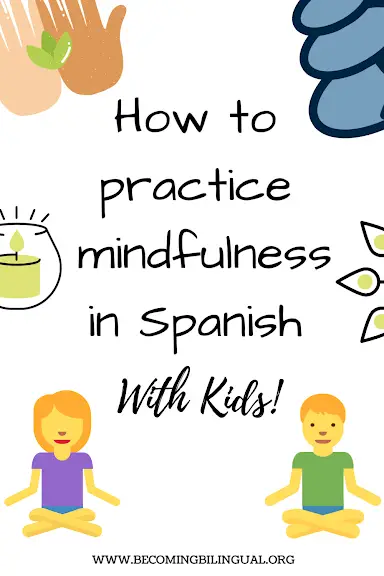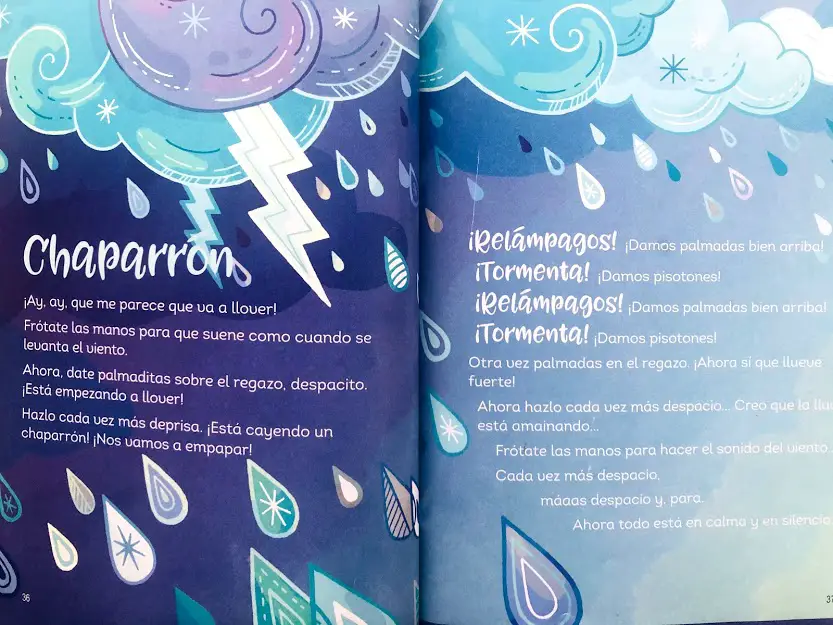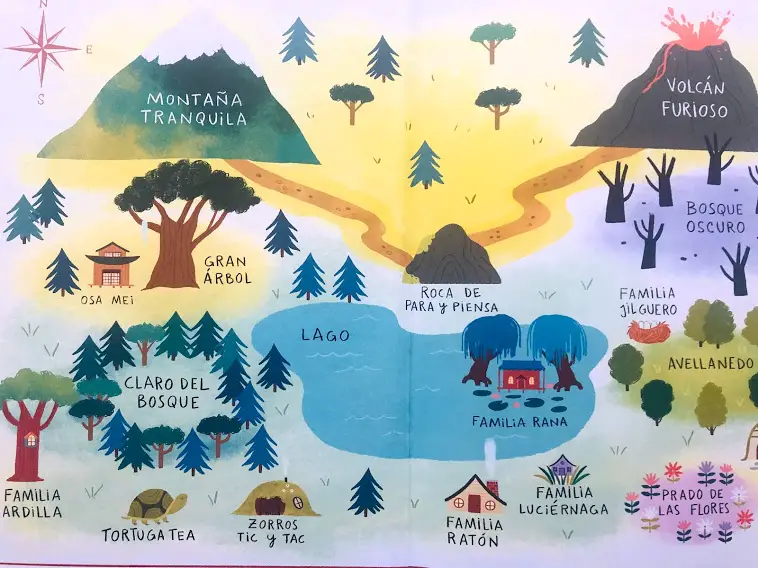Supporting you and your child on your language learning journey

How To Practice Mindfulness In Spanish

Practicing mindfulness is so important- for adults and children! I started to learn more about it and build a mindfulness practice, for myself and for my daughter, during the onset of the pandemic in 2020. Of course I wanted to find all of the mindfulness routines that I could in Spanish!
In this article I will go over how I started to learn about mindfulness and build the foundation for my practice. I’ll share mindfulness resources in Spanish and English that I used for myself and for my daughter, and talk about what I liked about them.
I hope this helps you to build a practice for yourself and your child! Enjoy these Spanish resources that help to build a better life.
This post contains affiliate links. If you click an affiliate link and make a purchase, I earn a small commission which supports this blog at no additional cost to you. Please see the Privacy Policy for details. Thank you for your support!
Table of Contents
The Foundation for my Mindfulness Practice
I had listened to a podcast by Sam Harris called, “ Making Sense ” where he brought up the topic of mindfulness meditation all the time, with almost every guest he talked to.
They all talked about how beneficial it had been in their personal and professional lives. He also mentioned that his wife, Annaka Harris, worked on mindfulness for children. She worked in several school systems where she taught a mindfulness class each week and that children as young as 6 years old were able to benefit from the weekly lessons. The more that I listened to people talk about meditation and mindfulness; the more that I became interested in trying it with my daughter.
For more information on the Sam Harris “Making Sense” app check it out here:
https://samharris.org/podcast/

Why Practice Mindfulness?
For me, mindfulness is all about paying attention to the present moment and being in tune with your body – thinking about where your stress is, how to relieve it, and how to lead an examined life.
All of these things I wanted for my daughter. I wanted her to be able to focus on the present moment, to be in tune with her thoughts and feelings, and to be able to articulate them and focus on being happy with herself.
Don’t we all want that for ourselves and our children??
I decided that we would try meditation and mindfulness together. Like learning a language, it seemed like the best method was to do it together and consistently.
One of the most important articles I read was this one published by the New York Times, “Mindfulness For Children”.
It was a really great article, check it out here!
Mindfuless For Children
It talked about the possibilities of working on mindfulness with children of any age, and stressed the importance of working on it daily,
“To instill these habits in children, practice is key . Don’t make mindfulness something that is turned to only in times of stress. Instead, make mindfulness exercises a regular part of the daily routine, an activity in and of itself, just like reading, playing outside or making art.” “Mindfulness For Children”
It also showcased an app that I tried out: WakingUp. There are several resources for adults and also a section with meditations for children with Annaka Harris.
https://wakingup.com/
These articles and sites are in English, but they gave me the foundation for what was to become our mindfulness practice.
My main problem was that I didn’t have a good starting place for mindfulness and meditation resources in Spanish. After lots of research, I was able to find a few resources that became our family starting place. Check them out!
“Respira Como Un Oso”

Each morning, my daughter picks a mindfulness activity from, “ Respira Como Un Oso ” and I take her through the activity in Spanish, using what I’ve learned from my readings and from listening to the guided meditations in English.
Unsurprisingly, many of the activities in “ Respira Como Un Oso ” match up to guided meditations that Annaka Harris uses on her site.
Instead of rushing through each activity, we go slowly. We talk about how we’re feeling or what we’re imagining and sometimes even use a timer to sit and reflect for a few minutes before moving on in the activity.
With more background and more experience, I’m able to guide my daughter through the activity in Spanish and help her to get more out of it.
Here’s the version of the book that we have and use. Kira Willey also has a website with more resources and a few board books geared towards younger children.
My daughter and I are still learning a lot about mindfulness, and some days it seems easier to meditate than others. But the conversations that we’ve had and the growth that we’ve made are obvious to both of us.
You can check out Kira Willey’s site here:
Kira Willey: Music, Movement & Mindfulness For Kids
Here’s what we like about, “ Respira Como Un Oso ”:
The Illustrations
One of our favorite parts about this book is the beautiful illustrations. My daughter is particularly drawn to them and spends a time analyzing each page before we start an activity.
The illustrations make the book more inviting and lend visual support to the activities. This is particularly helpful during activities like, “Las Nubes” or “Tu Color Preferido” where you need to image that you are a certain type of cloud or imagine a color that you enjoy.
My daughter likes to look at all the circles of colors, talk about how they make her feel, and think about which one she wants to imagine in herself that day.

When I used to think of meditating, I’d think of a person sitting with their legs crossed and their hands on their knees, absolutely silent and still!
While this is a form of meditating, there are lots of other ways to practice mindfulness. In “Respira Como Un Oso” there are activities that practice stretches, yoga poses and rhythmic movement. My daughter’s favorite activity is “Chaparon!” where we slowly build up our movements of hand taps and foot stomps, to create the sound effects of a thunderstorm and then slowly bring it back to silence again.
The range of activities that include movements make the concepts so accessible to young children and are easily attainable with kids, who wouldn’t be expected to sit in silence for minutes at a time.
The Sections
The book is broken down into 5 sections, “Calma”, “Concentracion”, “Imagina”, “Maxima Energia”, and “Relax”.
Each section has a table of contents of all of the activities that are included as well as an introduction about how and when to use that type of activity. The division of activities has been helpful for us because it allows us to pick activities that match the time of day when we’re using it. If we meditate before bed, we make sure to pick an activity from the “Relax” section and in the morning we like to pick from “Concentracion”.
“El Bosque De La Serenidad: Cuentos Para Educar En La Calma”

We also have another book of mindfulness stories that my daughter just loves! Since we typically read when we’re sitting at the table before/after mealtimes, this has become a weekly dinnertime book that has sparked some truly great conversation.
This is a new book to us and was originally published in Spain, which is a little different since most of the books that we find locally are publications from Mexico/South America simply because of our geography.
The book includes six short stories about the local animals and how they deal with the problems that they have. Each story has a general lesson or talking point that can be facilitated like, “what can you do when you feel scared?” or “how do you feel when someone annoys you?”
There is so much to love about this text, so here are some of our favorite things:

The Map and Character Introductions
The inside cover of this book contains a beautiful map of the area and all of the locations that you’ll discover in the stories in this book. My daughter loves to look at the map and see where the different characters live and look at the details of the surrounding areas.
The first few pages also provide an introduction to each of the families that you’ll meet in the following stories. This is helpful to get more background on the characters and provides talking points about their lives and situations.

Reflection and Suggestions
After each story there is a section with reflections about the story and exercises or tips to go along with that lesson. These are mostly geared towards parents/caregivers but some of them are also for children.
After reading the story of Osa Mei, we loved trying the meditation activities for children that it suggested and we were excited to compare them to the activities that we already knew from “Respira Como Un Oso”.
Engaging in activities in Spanish is one way that you can help to develop your child’s interest. This resource is two in one since it works on our Spanish skills and also helps to develop our mindfulness!
Here is the version of the book that we have and use. It’s hard cover and the images are a great quality!
Guided Spanish Meditations On YouTube
I’m not sure about the effectiveness of doing guided meditations with a video aspect to them. When we meditate, my daughter prefers to do this with her eyes open. When we’re working through a meditation activity in “Respira Como Un Oso” we often look at the illustration on the page at some point during the meditation as well so I know that there can be benefis to visual aides during meditation.
Despite that, I find that it feels different to meditate with a video and I usually end up closing my eyes so that I can focus on the words of the guided meditation, whereas my daughter prefers to watch it.
Whether you chose to use the video aspect or not, I have found that these two particular guided meditations are useful for the quality of the activity and because they have native Spanish speakers.
Gemma Sanchez
ElefanteZen
For more Spanish activities and resources check out this section here:
Spanish Resources For Kids
Mindfulness meditation is something that’s still new to me and that I’m learning more about. If you know of any other meditation resources for children that are in Spanish, please let me know in the comments – I’d love to check them out!
Happy Learning!
Don’t forget to subscribe here and get my latest posts and resources delivered directly to your inbox!
2 thoughts on “How To Practice Mindfulness In Spanish”
- Pingback: How To Talk About Feelings In Spanish - Becoming Bilingual
- Pingback: A Spanish Thankfulness Activity For Kids - Becoming Bilingual
Leave a Reply Cancel reply
Your email address will not be published. Required fields are marked *
- Kale by LyraThemes.com.

IMAGES
VIDEO
COMMENTS
Instead, make mindfulness exercises a regular part of the daily routine, an activity in and of itself, just like reading, playing outside or making art.”. “Mindfulness For Children”. It also showcased an app that I tried out: WakingUp. There are several resources for adults and also a section with meditations for children with Annaka Harris.